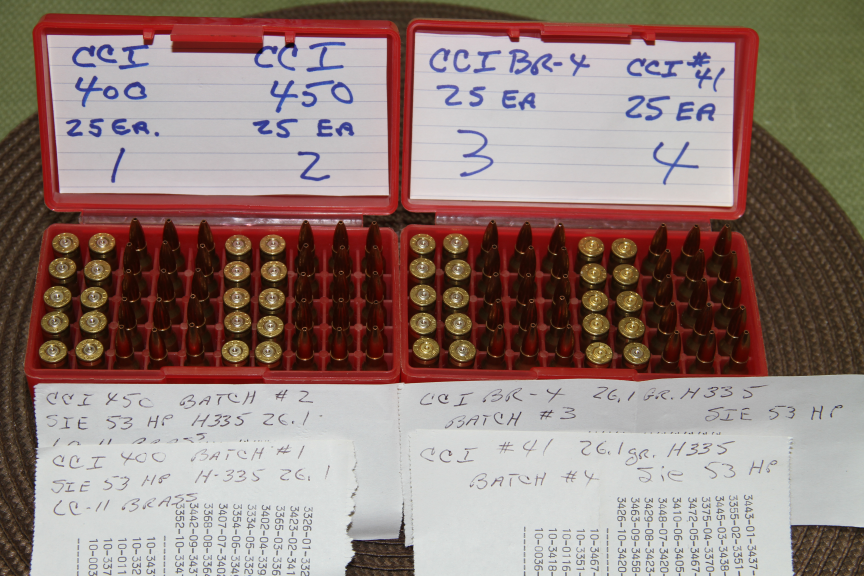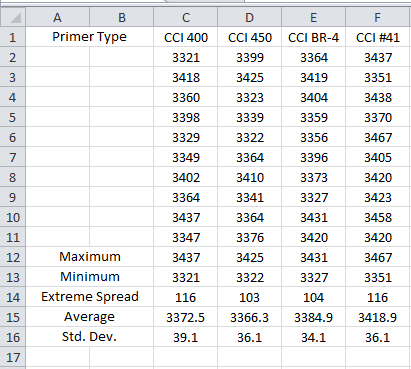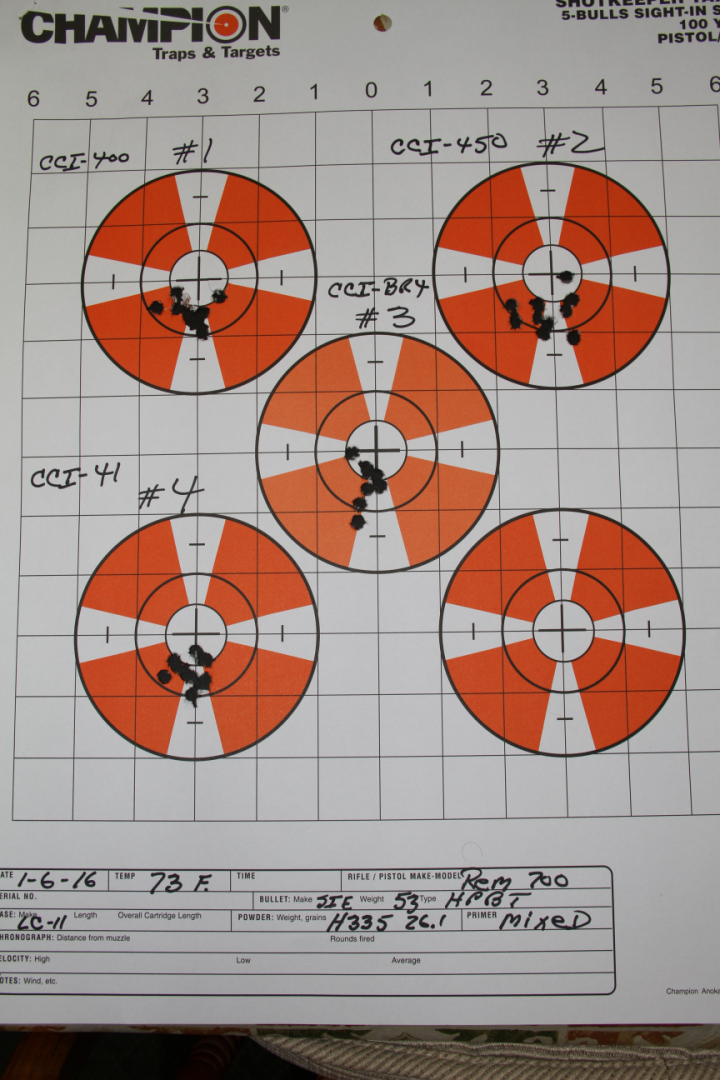Small rifle primers
#41......................................Mil. Spec. primer, thick cup, magnum primer charge, angle of anvil change.
BR4.....................................thick cup, standard anvil and standard priming mix held to a tighter tolerance.
The #41 is not at all the same as the CCI 450 Magnum primer. Anyone promoting that line of thought should give CCI a call or email them. They have always been happy to share information.
I did a brief comparison test last summer using four flavors of CCI primers and recording velocities. The brass was all identical, the cases trimmed identical and the same bullets and weighed powder charges.
Please keep in mind I was more focused on getting velocities than hitting the targets so the twn shot groups suffered a little. All shots were with a bolt gun having a 1:12 twist barrel.
I would treat the CCI #41 primers like any other primer starting low and working up a load. Interesting that for a given load the Magnum primers did not always have the fastest velocities.
Ron




